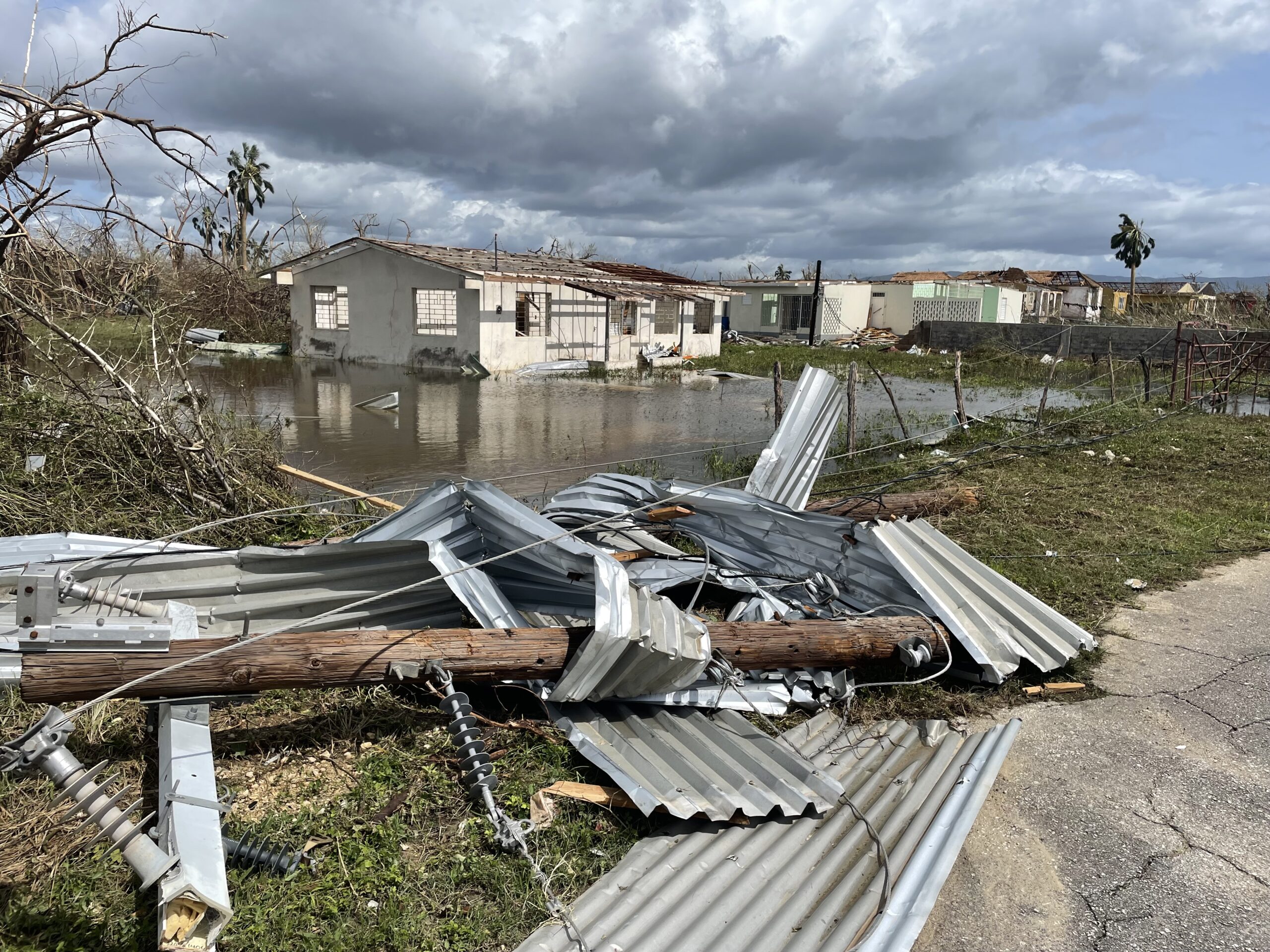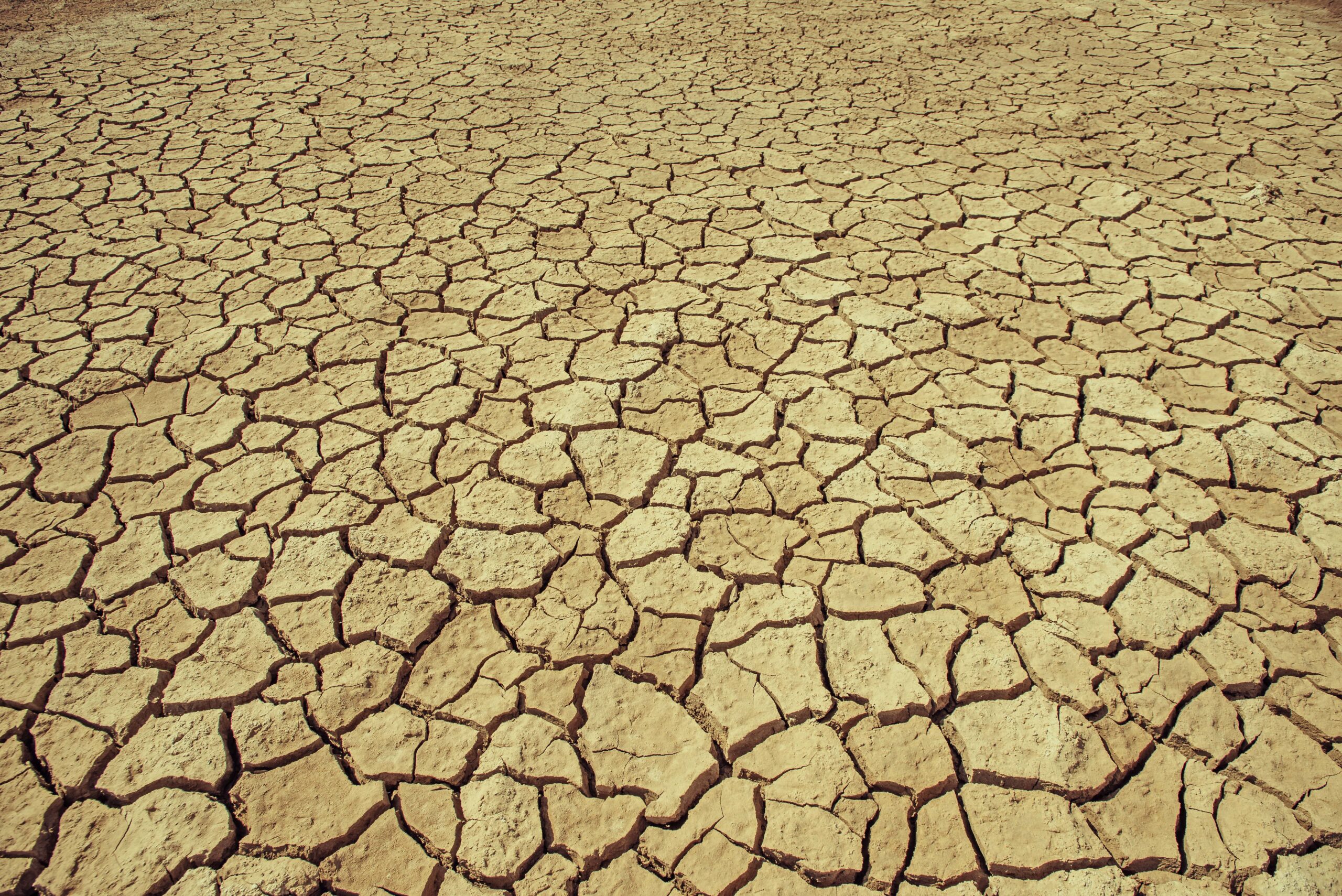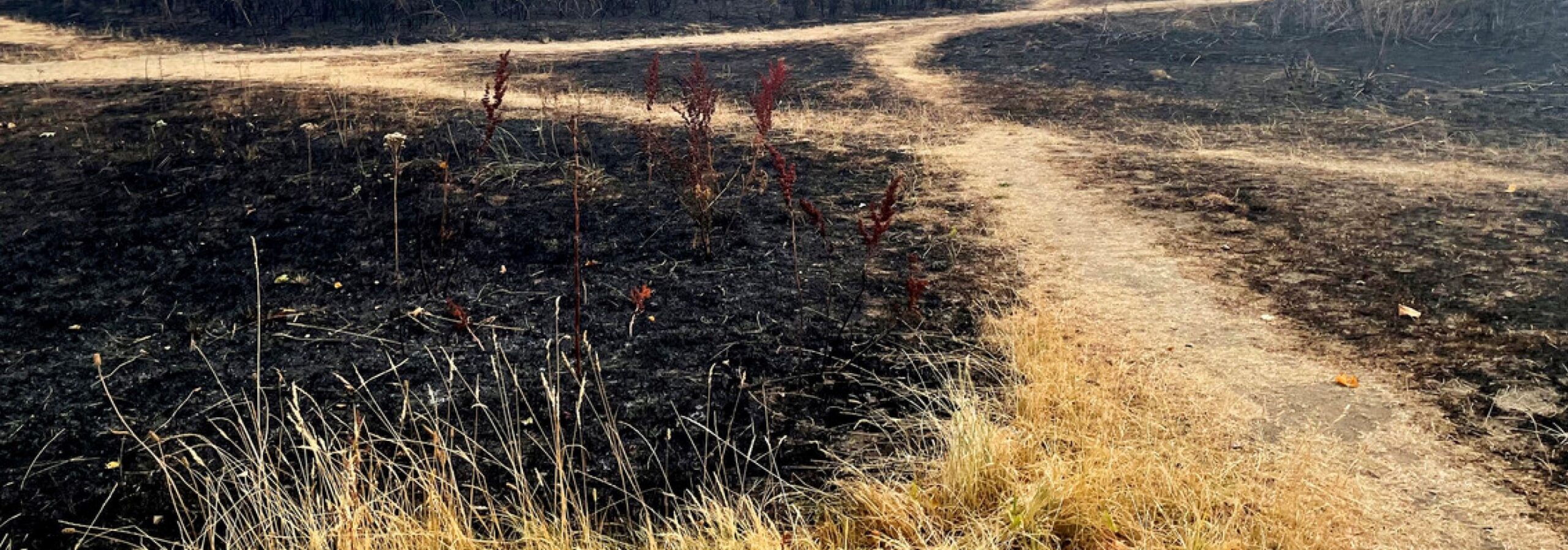Early on October 28th, Hurricane Melissa made landfall on the southern coast of Jamaica as a Category 5 storm on the Saffir–Simpson scale, bringing extreme winds, torrential rainfall, and life-threatening storm surges to coastal areas. The following day, Melissa weakened to a Category 3 hurricane before striking Cuba, while also bringing heavy rain and flooding to the neighbouring countries of the Dominican Republic and Haiti.
While it will likely take weeks to fully assess the extent of the damage, it is already clear that Melissa led to widespread destruction and severe disruption to critical infrastructure, including washed-out roads, damaged water systems, power outages, and communication failures. At least 28 people have been confirmed dead in Jamaica at the time of writing (Jamaican Government, 2025), with at least another 31 fatalities reported in Haiti and two confirmed deaths in the Dominican Republic (BBC, 2025), leading to a total of 61 deaths (4th November 2025) across the affected Caribbean islands.
Agricultural losses have been extensive, with crops destroyed and approximately 25,000 people were displaced and seeking refuge in emergency shelters in Jamaica, 6,000 of which are still in shelters a week after the hurricane hit (BBC, 2025). In Cuba, 241 communities were still without access to communication at the end of the week, affecting more than 140,000 (Reuters, 2025). The loss of communication and weather monitoring systems, including radar installations, has made it difficult to accurately estimate the total rainfall or the full scale of the damage caused by Hurricane Melissa.
The influence of climate change on tropical cyclones is more complex compared to other types of extreme weather events as impacts are driven by both heavy rainfall and extreme winds. In addition, the surrounding conditions, in particular the sea surface temperatures in the tropical Atlantic, are crucial for the formation of hurricanes.
Here, scientists from Jamaica, Cuba, the Dominican Republic, United States, United Kingdom, Sweden and the Netherlands, use several approaches to investigate the influence of climate change on different aspects of hurricane Melissa, following the same approach as with Hurricane Helene.
For the assessment of the role of climate change in the heavy rainfall, we divide the most impacted region into two subregions: Jamaica, where Melissa made landfall and caused two days of extreme rainfall, following three days of heavy rainfall before the landfall; and the Eastern part of Cuba (figure 1.1). In both regions we assess the 5-days of heaviest rainfall.
To study the conditions that formed and fuelled Melissa, we also analyse the role of climate change in the high sea surface temperatures that fueled the storm, and in “potential intensity”, a metric that combines sea surface temperature, air temperature and air humidity data to estimate maximum hurricane wind speeds.
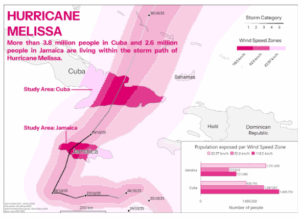
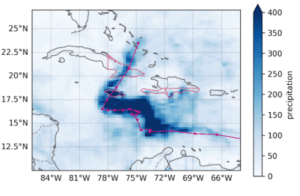
Main Findings
- Hurricane Melissa moved very slowly across the Caribbean, allowing the storm to gather immense destructive energy over very warm ocean waters. When it finally made landfall in Jamaica as a Category 5 hurricane, the storm hit a region familiar with hurricanes but unaccustomed to one of such exceptional strength and intensity.
- With more than 2.6 million Jamaicans and 3.8 million Cubans exposed to extremely strong winds (fig. 1a), the storm has severely damaged critical infrastructure such as telecommunications, roads, hospitals and disrupted water systems, adding challenges to immediate response as well as long-term recovery.
- The heavy rainfall from Hurricane Melissa also impacted neighboring countries, including the Dominican Republic, Cuba, and the highly vulnerable nation of Haiti. Haiti experienced significant, localised flooding and at least 31 deaths driven, in part, by the ongoing severe humanitarian crisis and related population vulnerabilities.
- To estimate if human-induced climate change influenced the heavy rainfall, we first determine if there is a trend in the observations. In Jamaica, we find that heavy 5-day rainfall events such as the one associated with Melissa are about 30% more intense and about twice as likely in today’s climate, that is 1.3°C warmer than it would have been without human-induced climate change. In Eastern Cuba the observations show an even stronger increase of about 50% in intensity and a factor 9 in frequency.
- To determine the role of climate change in the rainfall, we combine observations with climate models. We find that climate models are not able to represent the observed trends and underestimate the extreme rainfall. This is a known problem in the Caribbean and is in part because many climate models have relatively coarse spatial resolution, meaning they do not accurately capture the most intense tropical cyclone rainfall over small islands. In addition, the IRIS model was used to investigate the rainfall rate in Melissa’s eye wall, finding an increase in likelihood of 43% and about 16% in intensity of the rainfall associated with a storm like Melissa.
- Taking all lines of evidence together, including the observations, the IRIS analysis, other studies in the region, and physical reasoning, that in a warming climate an increase in heavy rainfall is expected, we estimate an increase in intensity of the rainfall associated with hurricanes like Melissa to be larger than 9%.
- The IRIS model was also used to investigate Melissa’s strong winds by analysing storms making landfall in the same region as Melissa. By statistically simulating these storms in a 1.3°C cooler climate, this model showed that climate change was responsible for an increase in frequency by a factor of about 5 in the number of such storms (now once every 1700 years on average, up from every 8100 years), and equivalently that the maximum wind speeds of similar storms are now about 5.1 m/s (around 7%) more intense. Increases in wind speed lead to an exponential increase in damages.
- The sea surface and atmospheric conditions leading to a storm’s intensity were also studied – using a metric known as potential intensity. We find that long-term, natural variability in the climate (represented by the Atlantic Multidecadal Variability in our analysis) explains about 43% of the variability of the potential intensity in the Caribbean. Independent of this internal climate variability, hurricane-conducive conditions are becoming more intense as the planet warms. We find that climate change increased the likelihood of conditions as extreme as those observed in October 2025 by a factor of about 6.
- Despite the Caribbean’s high exposure to intense hurricanes, and having contributed very little to global warming, globally available data and climate models do not capture the climate of the Caribbean well and require more investment and attention.
- Our results are consistent with other recently published rapid analyses (Climameter, Climate Damage Tracker, Climate Central). While each of these studies used different methodologies and addressed different research questions, the overarching finding is that climate change is enhancing conditions conducive to the most powerful hurricanes like Melissa, with more intense rainfall and wind speeds, leading to more destructive storms, causing high human and economic impacts.
- Hurricane Melissa struck a year after Hurricane Beryl made landfall in the same region, devastating agriculture and fishery communities and further damaging infrastructure that had not yet recovered.
- Jamaica, like many small island states, faces potentially catastrophic economic losses from hurricanes. To mitigate such risks, the government employs a multi-layer financial strategy, including disaster risk insurance, catastrophe bonds, parametric insurance through the Caribbean Catastrophe Risk Insurance Facility (CCRIF), and pre-arranged lines of credit with the World Bank and Inter-American Development Bank. For instance, a US$150 million catastrophe bond is expected to fully pay out after Hurricane Melissa. Despite these measures, preliminary estimates suggest damages from Melissa are at least an order of magnitude larger than available finance, representing a proportion of GDP or even a factor of GDP, posing a huge strain on the country. Further, there are psycho-social and other nonfinancial impacts that are not easily quantified or included in these figures, but require acute attention.
- In both Jamaica and Cuba, forecasts of Melissa were available at least 7 days before landfall, with steadily increasing certainty on the track, strength, and timing of potential impacts, providing adequate lead time for preparation. In Cuba this led to the evacuation of more than 735,000 people in low lying and coastal areas. In Jamaica, this allowed for the opening of 881 emergency shelters, evacuations of people in the direct path, pre-positioning of emergency supplies, the closure of airports and diversion of cruise ships. These efforts likely saved many lives. While additional adaptation efforts could be made, with such an intense storm we cannot reasonably expect preparedness actions to have averted all impacts, as the storm tests some of the soft limits to adaptation, especially with regards to infrastructure.

